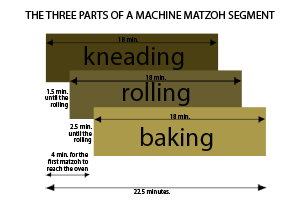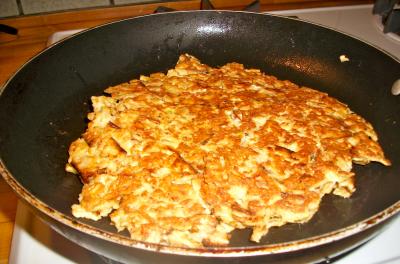Rice and all different types of legumes are permissible to eat on Pesach according to the custom of most Sephardim, as long as they are careful to check rice three times to ensure there is no wheat or barley mixed in.1
Care needs to be taken that no dust of flour came into contact with the rice (or any kosher food for Pesach). Therefore, one may use only natural, unenriched rice for Pesach, ideally a rice with a reliable Kosher l’Pesach L’ochlei Kitniyot hechsher.2
Those who refrain from eating legumes on Pesach are permitted to keep them at home; there is no need to sell legumes to a non-Jew.3
It is the Sephardic custom to use egg matzah (מצה עשירה) during Pesach. This type of matzah cannot be used to fulfill the obligation of eating matzah on the first two nights of Pesach. The bracha recited […]

Kosher for Passover Foods According to Sephardi Minhagim

Quinoa, the Grain That’s Not: Then Why the Need for Passover Certification?
January 2025
Tired of potatoes, potatoes and more potatoes on Pesach? Maybe give quinoa a try.
Quinoa is one of the most nutritious foods on the planet – cooked like rice, is gluten-free and loaded with vitamins and minerals. Even NASA has considered quinoa for its long-duration planetary space flights. Quinoa has become increasingly popular in the United States, Canada, Europe, China and Japan, where the crop is not typically grown.
What is Quinoa?
Quinoa (pronounced kin-wa) is a species of seeds of the Chenopodium (or “goosefoot”) family, which includes sugar beets and beet root, and is botanically related to spinach. It was first brought to the United States from South America in the 1980s. Seeds range in color from pink and orange to blue-black, purple, and red. However, once their natural saponin coating is washed off, the seeds are pale yellow.
Quinoa has been cultivated in the Andes Mountains for thousands of years, growing […]

Feeding Your Pet: Barking Up the Right Tree
Reviewed January 2025
Download Pesach 2025 Pet Food List
To some people, the concept that there are restrictions regarding what can be fed to animals may seem amusing. They wonder, “Really now, must dogs also eat kosher?” Of course, animals don’t need to eat kosher food. However, Halacha clearly instructs people regarding what, how and when to feed them.
The Talmud Yerushalmi1 states that before acquiring an animal, one must be sure he will be able to properly provide for it. Certainly, the owner must also know the applicable halachos. The following is a discussion of some of these halachos, including the subjects of meat and milk mixtures, Pesach, buying and selling non-kosher pet food, feeding animals on Shabbos and Yom Tov, and feeding animals before you eat.
STAR-K is not necessarily recommending ownership of pets; rather, we are providing information for those owners who require it. We […]

How to Check Matzos
Reviewed January 2025
The production of Kosher l’Pesach (KFP) matzos involves a great deal of meticulous work. The process begins with the inspection of wheat kernels to ensure that they have not been adversely affected by moisture in the air or prematurely sprouted. Grinding of the grain must be performed according to the dictates of Halacha, which precludes any pre-grind soaking of the grain and requires special preparation of the milling equipment to ensure that no contamination exists from non-Passover flour in the grinders and filters. The KFP flour is then loaded onto trucks, either pneumatically or in bags under controlled conditions, and shipped to the bakeries.
A bakery which has been kashered for Pesach will have already prepared special water (mayim shelanu) to be used for Pesach matzos. Hand matzah bakeries do not use regular municipal water for fear that the […]

Machine Matzos: Timing is Everything!
Reviewed January 2025
Meticulous, scrupulous and passionate are terms that describe the fervor, zeal and seriousness displayed by the kosher consumer regarding Pesach kashrus in general, and Pesach matzos in particular. The kosher consumer has become more sophisticated and savvy with each passing year. Kosher consumers are willing to pay top dollar for a quality kosher product. Pesach matzohs are no exception. Machine matzos with fine mehadrin hechsherim are readily available on the supermarket shelf. Are all machine matzos created equal?
Regarding matzah baking and the time parameters for chimutz, leavening, the Shulchan Aruch1states, “One should not leave the dough dormant, not for a moment.” If the dough is constantly being worked the chimutz process is impeded.However, the Shulchan Aruch continues, “If the dough is left dormant for a ‘mil’, the dough […]

The Rise of Oat Matzos
January 2025
Download PDF of Full Article Here
The advent of baking oat matzah for Pesach is a relatively new phenomenon. As one of the Five Grains, oats qualify as an ingredient for matzah. Until circa 5740 (1980s), however, it never appeared in recorded halacha as something that was done in actual practice.
If someone with a wheat allergy can tolerate spelt, matzah made from spelt is an ideal alternative. Spelt and wheat are closely related both structurally and halachically. Additionally, some suggest that the order of grains in the Mishnah has significance. Thus, spelt, which appears third in the list, takes precedence over rye or oats. Others reject this notion and hold that position on the list does not indicate hierarchy for matzah.
What are the options for people who suffer from celiac disease, an inherited autoimmune disorder identified in the 1950s as being triggered by gliadin […]

What Bracha Does One Make on Matza Brei and Other Common Pesach Foods?
Have you ever taken a bite out of a coconut macaroon and later doubted your choice of bracha? Was it really Ha’eitz or is it Shehakol? And what about matzah brei or matzah lasagna? Do they require washing for a Hamotzi or are they Mezonos? The table below should clear up any confusion.
1. A bracha acharona is recited when drinking at least a revi’is (3.8 fl. oz.) within a 30 second span. If one drank between 1.0 fl. oz. (kezayis according to some opinions) and 3.8 fl. oz. (and cannot drink more) within a 30 second span, a bracha acharona is not recited. However, if one also requires an Al Hamichya or Al Ha’eitz at this time, one can also include Al Hagefen. See Mishnah Berurah [M.B.] 208:82.
2. This depends on the percentage of grape juice. If there is […]

 STAR-D
STAR-D STAR-S
STAR-S